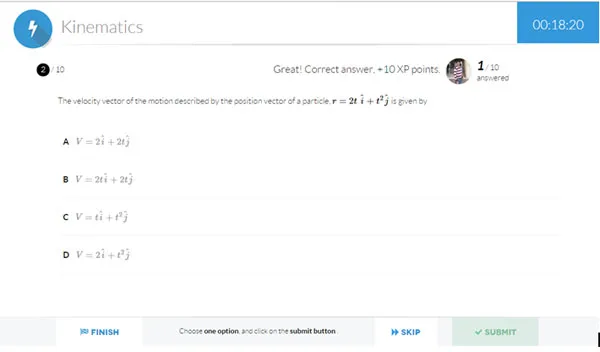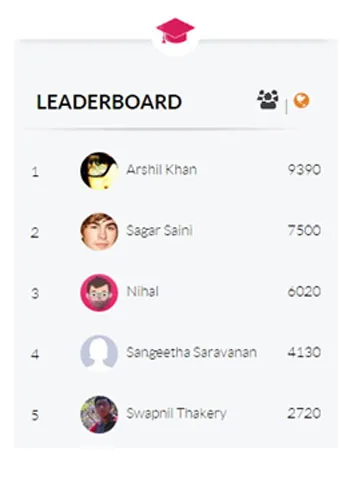How we integrated gamification with our IIT JEE test prep algo for 1 lakh+ users
Editor's note: 100marks (read their story) is an online test preparation company that helps students with IIT JEE. This space is hotting up and 100marks, one of the early movers has now crossed 1 lakh registered users. A Morpheus Gang company, 100marks is now looking to raise funds to fuel further growth. Here, founder Pradeep Kumar talks about how they use gamification on their online learning platform.
We recently released the beta version gamified adaptive practice tests for JEE on 100Marks. The IRT (item response theory) based algorithm was developed by analyzing 5 million responses of 150K students, the gamification was carefully integrated with algorithm to make the whole experience of JEE Practice enjoyable. Through this a student can not only practice alone but compete in real-time with his friends by scheduling a group study session.
Everyone knows that IIT JEE is difficult and requires lot of hard work and perseverance, so the idea was to make the experience a bit less painful and more fun. At the outset, we chose to do that with practice just because it was the easier part of the problem.
Now we were pretty clear that we are going to create both single player and real-time multi-player (group studies) tests and because our target market is a very competitive young audience (it is definitely the achievers type in the richard bartles player types). We definitely had to give great attention to the game mechanics. So let me take you through the thought process involved in designing the game mechanics.

Bartle’s Player Types
Points:
Points are a method of feedback for most people. They show them how they are progressing and XP points seemed like an obvious choice for us because of our very goal of making JEE Practice fun. (If you already do not know- As opposed to other point systems, XP points generates positive emotion, motivating user to practice more.)
Apart from using XP points for the motivation, we had to have another point system to accurately show the progress a user is doing towards his/her goal, so we calibrated a new point system by analysing last 10 years question papers taking into account the contribution of all the topics in exam and we called it TAI, Target Achievement Indicator. TAI points are now central to our JEE Practice and helps user get an instant picture of his/her preparation status.

Levels:
We divided each topic into 5 levels, where in user starts with level 1 with basic concepts of that particular topic to higher levels by providing correct responses to the questions, now apart from providing adaptive experience to the user in terms question difficulty, our algorithm decided whether a user should be promoted to a higher level in the topic.
Leaderboard:
Leaderboards are most vital part of any gamification process, but we learnt the hard way with our earlier practice module that just putting a leaderboard in front of the user with his rank is usually of no use. Leaderboard should instill a feeling of competition and a feeling of competition can only come when you compare user with his friends, so though we've put leaderboard everywhere in the practice, we made sure we show friends leaderboard by default and a user if wants to see the global leaderboard can, he can through a click.

Badges:
Though we have various badges that we award user for different things, The mayor badge of foursquare inspired us to create Einstein badge, here for any given topic, only one user can hold the einstein badge and that is the one scoring highest XP points in that topic.
Apart from these game mechanics, we also carefully designed game dynamics, especially in multi-player tests (group studies). The practice platform is live on our website, do check it out and let us know your feedback on the same.







